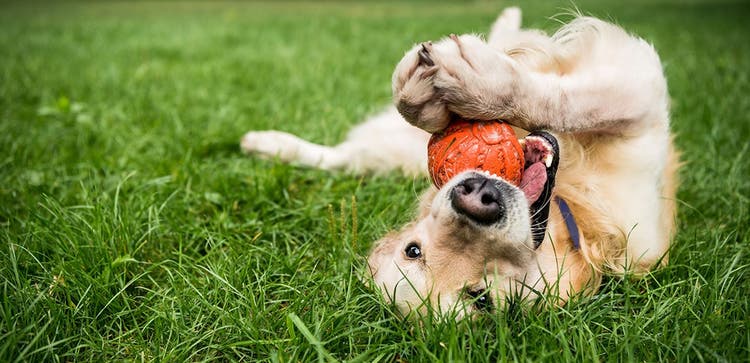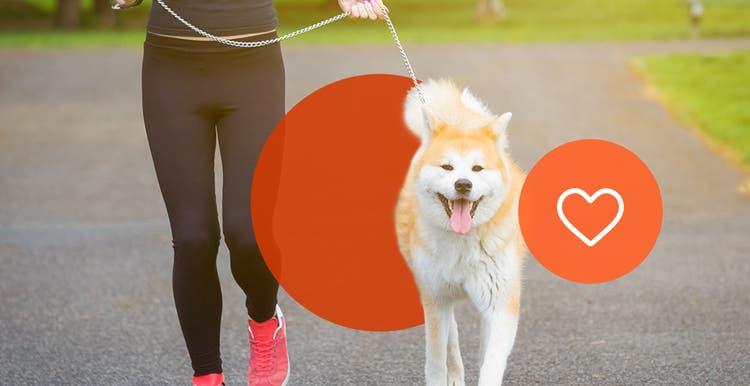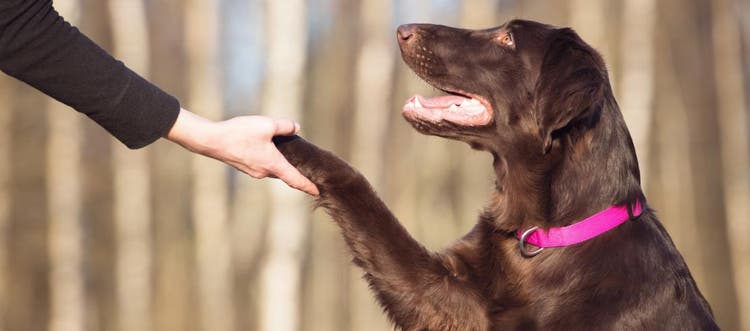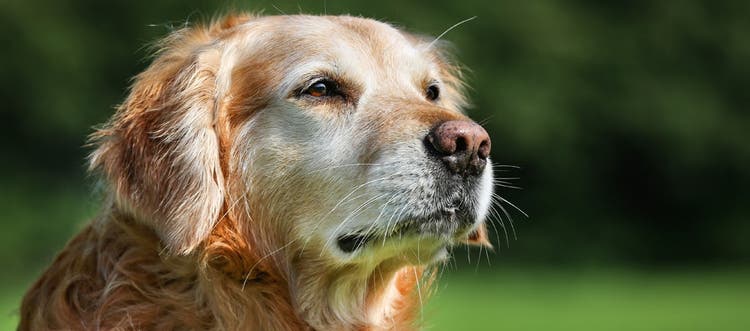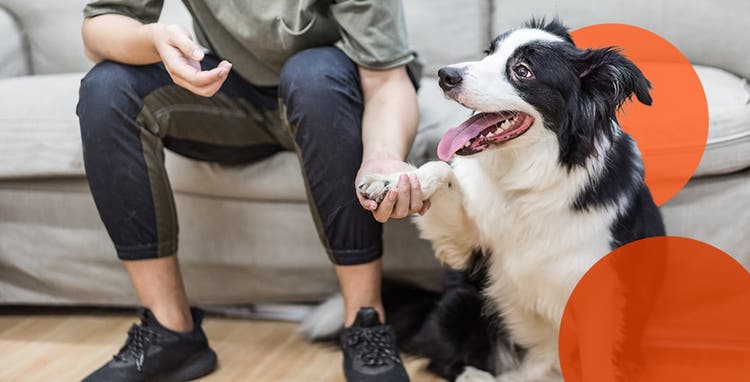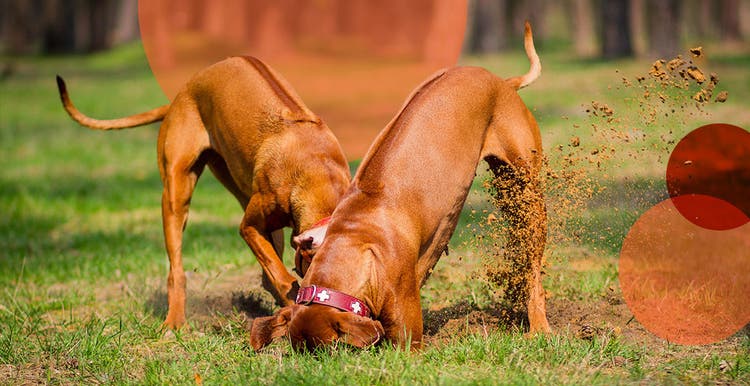Learn the exercise needs for your dog at every age.
It's no secret that regular exercise is good for our health — and the same is true for our dogs. In addition to a quality diet and adequate sleep, daily exercise is crucial to help your dog live their best life. Daily walks are tied to mental stimulation as well as physical health benefits like controlling body weight, strengthening muscles and supporting joint health.
Unfortunately, there is no one-size-fits-all answer to the question, "How much exercise does a dog need?" Just like humans, dogs can have very different exercise requirements. Let's take a closer look at factors that might affect how much exercise your dog needs, as well as signs that your dog is exercising too much or too little.
Dog Exercise: A Guide to Getting Started
The trick to dog exercise is knowing how much your canine companion actually needs each day. While the general rule is 30 minutes to two hours per day, the actual time can vary based on your dog's individual needs. Considering your dog's size, age, general health, breed and any other unique factors can help determine how much exercise time your dog needs.
Activity Level Varies Based on Breed
Your dog’s breed isn’t the only tried-and-true factor to consider when it comes to exercise, but it’s an important piece of the equation.
A heavy-duty working breed, for example, is going to need more exercise than a lap dog. Consider how huskies and boxers were originally bred to pull sleds or protect property; this disposition influences their energy and strength, so they generally require more activity than a toy poodle, Dalmatian or Havanese. So get to know your dog’s breed background and note their particular needs.
If your dog is a mixed breed, choose the breed and group that seems like the closest fit. To start, answer the following questions:
- What’s your dog’s general energy level each day? In other words, is your dog a couch potato, or do they seem ready to run multiple times a day?
- Is your dog a miniature, small, medium or large breed? What is the general activity level of your dog’s breed? Small dogs generally need less exercise, while larger breeds typically need more.
- What breed group does your dog fall within? Is your dog part of the working, sporting, herding, nonsporting, hound, terrier or toy groups? Herding, sporting and working dogs tend to require more exercise than the others.
Consider Your Dog’s Health Status
Health conditions can also affect your dog’s activity level. For example, dogs with osteoarthritis need regular, low-impact exercise, while dogs with heart conditions should only exercise within their ability, which will vary depending on the severity of their symptoms.
Controlled exercise in familiar areas is reassuring for dogs developing sight or hearing difficulties. Dogs recovering from surgery or a short-term injury are often sent home from the vet with an exercise timetable to help them build up their strength — without doing further harm.
Factor in Age
Taking your dog’s age into consideration is important throughout their life. This number will help you understand their range of activity, and also gauge how much you can push them on a hot day or on an especially long walk.
Exercise Tips for Puppies, Adult Dogs and Senior Dogs
These general guidelines for each life stage can help you switch up the exercise routine for your puppy, adult or mature dog.
Exercise for Puppies
The average puppy is a perky, energetic bundle of fur and fun. But contrary to popular belief, puppies require less activity than adult dogs. Overdoing it with a puppy can come with harsh consequences, like joint or bone damage, so it’s important to provide appropriate activities without going overboard:
- Walk time: Generally, puppies can walk five minutes for every month they have aged, up to twice per day. So if you have a 3-month-old puppy, try a 15-minute walk once per day, and work toward increasing to two times each day.
- Supervised free play: When supervised and off leash, puppies can be incredibly adventurous — whether in the backyard or exploring a dog park. They can make their own fun by exploring and enjoying sensory experiences: inhaling fresh scents, looking to you for encouragement, surveying the land to see what they can discover and even meeting new people or dogs as they begin socialization. Playing hide-and-seek and fetch are easy games that help puppies get their daily exercise. Just watch for signs that they are overheated or too tired, and take a break when necessary. Exercise large- or giant-breed puppies for shorter but more frequent intervals and discourage jumping that's tough on joints.
Exercise for Adult Dogs
A healthy, adult working-breed dog may require more than two hours of active exercise a day. We know daily walks are critical to your dog’s physical and mental health, but how can you switch it up? A change in location, duration or activity may be the key to lifting your dog’s mood:
- Go with games: Fetch is a classic, but you can add variety by swapping a favorite ball for a flying disc or a rope toy. You can even turn training into a game that provides mental stimulation as well as physical exertion by teaching tricks like come, heel or spin.
- Walk it out, inside: Bad weather doesn’t mean your dog has to skip their walk. With supervision and a very slow start, your dog can walk on a treadmill to build endurance. Your dog may also enjoy other forms of indoor exercise, from wrestling matches to obstacle courses.
- Take a hike: Trail walking allows you to explore new terrain and change your dog’s environment. Just avoid difficult trails at first, and bring along plenty of fresh water.
Exercise for Senior Dogs
Senior dogs have a different capacity for exercise than their younger pup selves — an elderly, small-breed dog might be happy with a 15-minute walk twice a day. But older dogs still appreciate variety and a change of pace. Consider switching up their activity routine, even if you just walk through a different neighborhood.
- Step up the scent work: Training your older dog’s nose to pick up the scents of a trail can be a low-impact and rewarding activity.
- Get your fetch on: Try a gentle game of fetch — but nothing too strenuous!
- Soothe with swimming: A little dip in a pool may be just what your aging pup needs to soothe their joints and fit in some movement.
Exercise Tips for Dogs with Health Conditions or Joint Issues
Be sure to take any health issues like arthritis or heart conditions into consideration. For dogs recovering from an illness or injury, follow your veterinarian's recommended exercise plan.
Here's how you can create a safe exercise plan for a dog's unique health needs:
- Work with your vet: Your vet can help you determine how much exercise and the type of activities your pet needs, or refer them to a physical therapist.
- Consider low-impact exercise: We are increasingly understanding the damage that chasing after a ball can do to dogs, especially arthritic ones. Walking, on the other hand, is ideal, especially for dogs with arthritis, hip dysplasia or other joint issues. Swimming is another fun low-impact exercise. Try hiding some of your dog's daily kibble around the house and getting them to find it, or engage in trick training or games like hide-and-seek.
- Choose the right exercise surface: Avoid hard or uneven surfaces that are rough on joints. Slippery surfaces like hardwood, tile or linoleum can also be tricky, especially for dogs with arthritis. Instead, consider softer, shock-absorbent surfaces such as sand, rubber or level grassland to reduce the strain on your dog's joints. Nonslip area rugs and yoga mats can provide extra grip for your dog around the home, too.
- Consider mental exercise: Try introducing brain-training games, puzzle feeders or even "sniffaris," which are slow-paced walks focused on smells.
How to Tell If Your Dog Is Getting Too Much or Too Little Exercise
Dogs risk damaging their joints when they overexert themselves. If they have exercised too much, you may notice your dog:
- Limping
- Developing foot injuries
- Lagging behind or slowing down
- Experiencing muscle pain and stiffness the day after exercise
- Exhibiting aggressive or irritated behavior
- Showing extreme lethargy after activities
On the other end of the spectrum, dogs that don't exercise regularly are more likely to become overweight or obese. Many under-exercised dogs become bored and destructive, while some bored dogs withdraw, becoming quieter and sleeping more.
Getting your dog's exercise requirements right is an important part of their care. The best way feel confident about your dog's activity level and age-appropriate limits is to ask your veterinarian. Seek their help in outlining your dog’s routine based on their unique needs, whether they are a puppy, an adult or a senior



